|
It may still be summer, but the tease of fall is in the air. A smattering of leaves are beginning to float down from the deciduous trees, the sun is setting earlier in the evening and rising later in the morning. I’m hearing less hummingbird chatter, which means they have begun their migration south. This past week, daytime temperatures have been mild, with deliciously cool nights. All of this is a reminder that autumn is rapidly approaching. Just as the seasons shift, so too do our cravings at the table and in the glass. While red, white, and rosé wines can be enjoyed year-round, many wine lovers have seasonal favorites. As autumn and cool temps advance, red wines often take center stage, edging out the lighter wines that we enjoy in summer’s heat. Here are three red wines to welcome autumn. Domaine Bousquet Reserve Organic Malbec 2023 Domaine Bousquet has made frequent appearances on my website, and I’ve enjoyed reviewing their wines on numerous occasions. This family-owned estate is located in the Gualtallary Valley, high up in the Tupungato district of the Uco Valley in Argentina’s Mendoza region. It is Argentina’s largest producer and exporter of organically grown wines. To learn more about their vineyards and wines, click “Domaine Bousquet” in the Categories section on the right. This wine is a blend of 85% Malbec, 5% Merlot, 5% Syrah, and 5% Cabernet Sauvignon. These certified organically grown grapes are harvested from the estate’s best plots in the Uco Valley. This wine is aged 50% in 2nd-use 400L French oak barrels for six months, with the remaining in stainless steel and concrete tanks. Nose: Dark berries, plum, and spice, with a hint of floral and oak. Palate: Layered with plum, blackberry, raspberry, dark cherry, chocolate, and pepper, ending on a long, silky finish. Nicely balanced with soft tannins and good acidity. Alcohol: 14.5% SRP: $18 Pairing suggestions: Grilled meat, pasta, stews, seared tuna, and spicy Asian cuisine. Famiglia Cotarella Sodale Merlot Lazio IGT 2020 Famiglia Cotarella is family-owned business spanning three generations of grape growers and winemakers from Umbria, Italy. Today, sisters Dominga, Marta, and Enrica Cotarella control the family estates. Their mission is to further tie the company’s identity to its native terroir and the family name. Their portfolio includes classic Italian blends and single varietal expressions of Merlot and Sangiovese from Lazio, Umbria, and Montalcino. This wine is 100% Merlot. Grapes were hand-harvested from vineyards in the Lazio region. After fermentation, the wine was aged for nine months in neutral French oak barrels. Fined and lightly filtered before bottling, the finished wine was aged for several months in bottle before its release to market. Nose: Violets, red fruit, baking spice, and subtle hints of cherry. Palate: Round and smooth with notes of dark berries, plum, dark cherry, and spice. A touch of vanilla and cherry tobacco lingers on a long finish. Alcohol: 14.5% SRP: $25.99 Pairing suggestions: Roasts, game, poultry, mushroom risotto, and hearty stew.. Lázuli Cabernet Sauvignon 2017 Vina Aquitania is a partnership of four distinguished winemakers and vineyard owners. Bruno Prats and Paul Pontallier (RIP) of the Bordeaux region, Ghislain De Montgolfier of Champagne, and Felipe De Solminihac, a renowned oenologist in Chile. They produce limited quantities of Chilean wine inspired by the Bordeaux tradition. This wine is 100% Cabernet Sauvignon, hand-harvested from 25 to 30-year-old vines planted in Peñalolén, a commune bordering Santiago de Chile at an elevation of 2,300 feet in the Maipo Andes. The wine was aged for 16 months in French oak barrels and is named after Lapis Lazuli, the beautiful blue gemstone found in Chile. Nose: Lots of dark fruit, floral notes, jammy plum, and subtle hints of baking spice, earth, and herbs. Palate: Aromas segue onto the palate with blackberry and cherry tobacco. This is a balanced and complex wine with a playful amount of acidity. Alcohol: 14.5% SRP: $45 Pairing suggestions: Enjoy with roasted meat, venison, seared tuna, spicy cuisine, and dark chocolate desserts. What red wine will you pour as the leaves turn? Until next time…
Cheers! Penina To leave a comment or if you have an inquiry, please contact me at [email protected] It was June of 2016 while attending the Descorchados NY South American wine event that I first met Felipe Ortiz. Felipe is Chief Winemaker for Casa Donoso located in the Maule Valley of Chile. I remember being caught up in his enthusiasm and passion as he introduced me to his very intriguing wines. Felipe said that the Maule Valley had a “multiplicity of characters” and then gave a general description of the wines. “White wines are very fresh with mineral traces, in particular our Sauvignon Blanc. Red wines with short maturity cycles show a very good balance between alcohol and acidity, like Merlot and Cabernet Sauvignon. And above all, a nice and silky Carménère is a tricky and demanding variety which is hard to mature properly in other valleys”. One year later we met again at the same event. And once again, my palate was treated to Felipe’s expressive wines. We have stayed in touch throughout the last few years with the hope that I might visit Casa Donoso one day. I have not had the opportunity to travel to Chile yet, and now with travel on hold for most of us, it is unlikely that I will visit there any time soon. So, Felipe sent Casa Donoso to me with a bountiful shipment of wines and a candid long-distance conversation. Chile is a long and narrow country bordering the Pacific Ocean to the west, and to the east lie the Andes Mountains, which is among the world’s highest mountain range in the Western Hemisphere. Chile spans 2700 miles running from north to south and is only 100 miles wide. Its numerous wine regions are then divided into sub-regions. Due to the expansive range of terroirs, the style of wines made here has an equally wide range, with most of the climatic variations in the wine-growing regions running from east to west due to the influence of the ocean and mountains. Casa Donoso is located in the sub-region of Talca, which is in the heart of the Maule Valley and is part of the DO Central Valley region. Maule Valley is the largest wine-producing region and also the oldest wine-growing region in Chile. Some of the countries’ oldest vines that were planted over 100 years ago still exist here. It is also one of the southernmost wine-growing areas of Chile. The soils throughout Maule Valley are of sedimentary origin, such as sandy and deep clay loam and the climate is Mediterranean. The main grapes grown here are Cabernet Sauvignon, Carménère, Merlot, Carigñan, Sauvignon Blanc, and Chardonnay. Casa Donoso was created 30 years ago by a group of French investors who saw the potential of this unique terroir. They made it their mission to focus on the production of premium wines from the onset. They were among the first foreign investors to introduce modern technology to the winemaking industry in Chile. In 2014 the Selume family, a national group, took over. Felipe said, “They continue to follow the line of quality in the wines. We have a French heritage from the beginning as well as a new world winemaking vision, which allows us to generate high-level wines. Casa Donoso is a classic and elegant concept in the Maule Valley.” Felipe Ortiz joined Casa Donoso in 2008. I asked Felipe how he became interested in winemaking and where he received his training. Felipe: “I think my first approach to the wine world was thanks to my father. He always showed me varieties of wine pairings with food when I was young. Then at the university, I studied Agronomy Engineering in Chile. To be a winemaker here, you must first study agronomy. During the last years of my studies, I leaned towards viticulture and enology, a branch of agronomy. In Chile, before I finished the university, I started working during the vintage season at Los Vascos for a total of four vintage seasons. Then I also worked at Viña San Pedro during another harvest season.” Felipe graduated with a degree in Agronomy Engineering and Enology. From 2006 to 2008 he went on to develop his career working with wineries in California, Provence and Barossa Valley in Australia. It was the middle of 2008 when he joined Viña Casa Donoso where he is now the chief winemaker. Felipe is a member of the Chilean Association of Engineering Agronomists Enologists. (ANIAE) Casa Donoso has 400 hectares of vineyards located throughout Maule Valley from central Maule to the coastal and pre-mountain zones. The altitude on average is 100 meters (328 ft) above sea level. One of their vineyards, La Oriental Estate, is in central Maule and one of the oldest estates in Talca with 123 hectares and vines that are more than 60 years of age. The Donoso portfolio of wines is diverse and has several different brands representing a range of traditional and atypical red blends. When I met Felipe in 2016, the very first wine he poured for me was Sucesor Romano Limited Release 2015. Sucesor is considered “the avant-garde line of the Donoso group.” It is also a project that has inspired Felipe and allowed his creativity to shine through with these daring blends. Felipe, tell me about Sucesor and its inception. Felipe: “Successor was created with the need to seek oenological innovation. In 2013 we started working with Carigñan with a more friendly and assembled concept called Successor BLUE. Then in 2014, we developed Sucesor Romano, a challenging project made with the César noir grape that was almost extinct in the world. Jean-Michel Boursiquot is a renowned ampelographer, who rediscovered what is now Chile’s flagship grape variety, Carménère. He also discovered the César noir grape (Romano, colloquial name) in our fields in the ‘90's. He later helped us with the information process to register the grape in Chile. We have just 0.5 hectares of this variety in our vineyard and we are the first winery in Chile to commercialize this grape. We continued our project with Sucesor RED, which is Carménère assembled with Malbec, also an unusual mix in Chile and the world. And, starting in the year 2019, we began developing a new project with Sucesor, using the grape, Portuagais Bleu. We hope to release this project in the coming year.” What is the most challenging grape for you to work with? Felipe: “I think with relevance to the Sucesor project, it is César noir. It is a very delicate grape, which we have to cut at the right time without losing freshness. Then in the winemaking process we try not to over-extract it too much. Finally, the wine rests for short storage in Spanish amphoras and another part in used barrels (not new), which increases its potential. César noir originates from Burgundy, strongly planted in the Irancy area, where history tells that it is mixed with fine Pinot noir to improve its concentration. In Chile, it is estimated that it arrived during the year 1945. But there is information that it may have even arrived earlier.” Has climate change affected your approach to winemaking? Felipe: “Undoubtedly! Ten years ago, the Maule Valley (160 miles from Santiago in southern Chile) was much colder and we had to wait longer than normal for grapes to mature. For example, Carménère harvesting took place at the end of May. Today climate change has affected an increase in temperatures where the same Carménère is harvested 30 to 45 days earlier. Unfortunately, together with climate change, we have had to adapt to drought and low rainfall over time. So we have to generate new ways to advance in winemaking. Each year is different; there are no recipes to produce good wine.” The Wines D Icon Limited Edition 2015 This is an unfiltered, Bordeaux-style wine blended with 40% Cabernet Sauvignon, 30% Carménère, 20% Malbec and 10% Cabernet Franc. Grapes are harvested from 70-year-old vines. Wine is aged for 24 months in French oak barrels, of which 25% is new oak. Aromas of dark berries, spice and a touch of floral lead to a luscious palate of plum, blackberry, spice and vanilla. It is beautifully blended with silky tannins and a long finish. A trace of herbs and vanilla linger. Felipe: “It is a very elegant and aromatic wine, not very concentrated, Bordeaux style, but with a lot of character of our terroir. For me, it shows a very elegant and classic concept of Maule valley!” Alcohol: 14% SRP: $55-$65 1810 Super Premium Cabernet Sauvignon- Carménère 2017 The blend for this wine is 50/50. Grapes are harvested from 40-year-old vines and the wine is aged for 18 months in French oak barrels, of which 15% is new oak. The name for this wine honors an important part of Chilean history. Talca was the site where the Chilean Act of Independence was signed in 1810. Dark berries, plum and spice aromas segue onto the palate with notes of fig, toast and vanilla. This is a subtle and smooth wine with firm tannins and a lengthy finish. It is very elegant. Felipe: “It shows what is done with these two varietals in Chile, a lot of country image in this wine and another of our classic wines. It is of the classic line, but with a very marked concentration and intensity.” Alcohol: 13.5% SRP: $30-$35 Bicentenario Gran Reserva Carmenere 2018 This wine is 100% Carménère. Grapes are sourced from 30-year-old vines. 70% of the wine is aged for 12 months in French and American oak barrels and the remaining 30% is kept in stainless steel tanks. The name and label are a tribute to 200 years of independence for Chile. Subtle floral aromas mix with fresh red fruit that gently spills onto the palate with notes of raspberry, dark berries, spice and soft tannins. It finishes nicely with a hint of toasted oak. Felipe: “This Carménère follows a line that is NOT overripe or high alcohol but is a very fresh Carménère. Red fruit, mild spices, and an elegant mouth. One of the characteristics of the Maule Valley is the freshness of the wines (different to other valleys in Chile)” Alcohol: 13.5% SRP: $16-$20 I love what the back label for the Sucesor wines says. “Sucesor is the disordered line of Casa Donoso Winery where our winemaker proposes daring and innovative blends that step out of the classic style of the winery. These wines have been created for all wine lovers who are each day bolder.” Sucesor Blue Limited Release 2015 This is a blend of 60% Carigñan, 25% Cabernet Sauvignon and 15% Cabernet Franc. Grapes are harvested from 80-year-old vines in the coastal vineyards of Loncomilla. 30% of the wine is aged in Spanish amphoras for 18 months and 70% in French oak barrels for 15-18 months. Lush dark and red berry aromas leap out of the glass with a touch of floral and dark cherry added. This wine is smooth and delicious with berries, plum and mocha dancing on the palate. Subtle notes of minerality blend well with this refreshing red. Felipe: “This shows the Carigñan in another face from the normal. it is a fruity, fresh wine style, assembled with Cabernet and Cab Franc. It also does not pursue a lot of alcoholic degrees and is a very friendly concept of Carigñan. Part of its aging is using Spanish amphoras, which reflects a very powerful fruit.” Alcohol: 13.5% SRP: $35-$45 Sucesor Red Limited Release 2016 This is a blend of 80% Carménère and 20% Malbec. Grapes are harvested from 40-year-old vines. 30% of the wine is aged in Spanish amphoras for 18 months and 70% in French oak barrels for 15-18 months. Heady aromas of floral mingled with red fruit and spice spill onto the palate to reveal notes of strawberry and cherry that blend nicely with spice and a trace of red plums. Silky tannins and a long finish with vanilla and spice lingering will make any palate sing. Felipe: “This wine shows a very different face of Carménère mixed with a Malbec. It has floral notes and generates a very interesting nose. In the mouth, there is a bit more concentration and intensity but without losing the elegance of the Carménère (soft tannins). Sucesor plays with amphoras in the aging, which is characteristic of the line.” Alcohol: 13.5% SRP: $35-$45 Sucesor Romano Limited Release 2018 This is the first time I have tasted a wine made with César noir. It is a blend of 90% César noir and 10% Carménère. Grapes are harvested from 70-year-old vines. 50% of the wine is aged in Spanish amphoras and 50% in French oak barrels for a period of eight to ten months. Seductive floral aromas with notes of red fruit, raspberry and spice set the stage for this delicious wine. Floral notes continue onto the palate with layers of rich berries, spice and plum. Minerality, hints of herbal and nice acidity add depth to this juicy wine. The finish is long with violet, vanilla and mocha lingering on the palate. Felipe: “Cesar noir has been a rediscovery of this variety in Chile, which we found in our fields. It is a project that started in 2013 and the first vintage was 2015 and introduced around the world (USA, EU, ASIA, Brazil). We were the first winery in Chile to show this wine. It is a very fresh wine, red fruit, medium body and characteristic juiciness of this Maule Valley. It is a very different proposal and an invitation to the innovation of all this Sucesor line.” Alcohol: 13.5% SRP: $35-$45 After tasting through these wonderful wines, I’m eager to know what the Donoso Group has in the pipeline for the future. What goals in winemaking are you still looking to achieve? Felipe: “I think to continue doing work with grapes that are little worked on or lost in the world such as Cesar noir and Portugais Bleu. The innovation side I think is very challenging as a winemaker. Also, Donoso Group supports these developments and I feel very pleased about it. My pursuit is to make wines that fully reflect the terroir that they come from, always generate a unique character independent of the variety and finally make wines that the consumer remembers and enjoys always.” Of course, I can’t end this conversation without asking what your personal favorite wine is to drink? Felipe: “I think my favorite wine depends on the moment. For example, for a barbecue I look for wines with a higher concentration such as Cabernets or mixtures based on cabernet, it can also be a Carigñan. If we talk about seafood, what better wine than a rich Sauvignon blanc from the Maule foothills. For milder or spicy foods there are many alternatives such as Carménère, Romano, Malbec, among others.” Felipe has definitely captured the essence of the terroir in these wines and sipping them has brought me a tad closer to Chile. However, I can’t wait until the doors open once again for traveling. I’m looking forward to a 360-degree tour of Casa Donoso and another wine tasting with Felipe! Until next time…
Cheers! Penina To leave a comment or if you have an inquiry, please contact me at [email protected] If you have been following my blog for the past few years, then you know that I’m a fan of Chilean wine. And, I enjoy drinking the many noteworthy brands that Concha y Toro produces such as Don Melchor, Casillero del Diablo, Gran Reserva Serie Riberas and Marques de Casa Concha. Since Concha y Toro was founded in 1883, it has become Latin America’s leading wine producer, exporting to 147 countries worldwide. The company owns approximately 10,800 hectares of prime vineyards in Chile, Argentina and the United States. In 1718, King Felipe V of Spain bestowed upon the Concha y Toro family the title of “Marques”. It was later on that the family moved to Chile and Don Melchor Concha y Toro founded the winery in 1883. As a tribute to the “Marques” title, the Marques de Casa Concha wines were created and launched in 1976. The Marques Casa Concha grapes are handpicked from single vineyards, except for the Cabernet Sauvignon, which is a blend from the Puente Alto Vineyard and Pirque Vineyard located close to the foothills of the Andes Mountains in the Maipo Valley of Chile. The climate is semi-arid Mediterranean with a strong impact from the Andes Mountains creating extreme temperatures between night and day. The grapes experience a longer ripening period allowing for aromas that are more intense and concentrated. Marcelo Papa, who is one of five lead winemakers at Concha y Toro, makes the Marques de Casa Concha wines. The Marques de Casa Concha 2015 Cabernet Sauvignon is 95% Cabernet Sauvignon, 4% Cabernet Franc and 1% Syrah. It is a dark and inky red with lush aromas of dark fruit, plum, wood and spice. The palate offers layers of blackberry, dark plum, pomegranate and spices. The finish is long and peppery with black cherry lingering on the palate. The wine has a smooth texture and medium tannins and it will pair well with meat, game and hearty fish. Alcohol: 14.5% SRP: $25 While I’m on the subject of Concha y Toro, I had quite the treat the other evening. A friend, who is also a wine writer, opened a bottle of Concha y Toro 1985 Cabernet Blanc that had been hibernating in his cellar for many years. Although the back label stated that it was a “blush” color, it had clearly turned to a rich cognac tone due to oxidation. The cork was removed easily and intact. I was sure that the wine would be a “pour down the drain” bottle. However, we were both pleasantly surprised. Subtle aromas of perfume segued onto the palate. It had hints of vanilla and caramel with a port like quality to it. This 33-year-old vintage was quite drinkable! Until next time!
Cheers! Penina To leave a comment or if you have an inquiry, please contact me at [email protected] 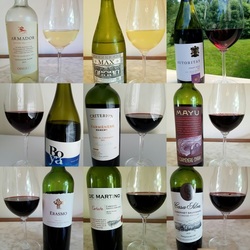 In my last post I reviewed nine bottles of wines from Chile. Needless to say, I had a lot of wine remaining in the bottles. 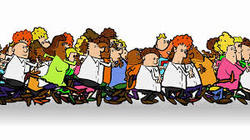 One of the perks of reviewing wine is sharing the leftovers with my “wine lover” friends. So, when word went out, they were lined up at the door with wine glasses and wine tote bags in hand! It was a fun weekend! I’ll be back this week with more adventures and wine reviews. However, it’s a beautiful day and I’m off to embrace it!
Happy Monday! Cheers! Penina Wines of Chile Visits Whole Foods Markets Over the past few months, I have written several posts pertaining to Chilean wines. I have described the land, talked to wine producers and reviewed some amazing wines. For a better understanding of Chile, its regions and grapes, please go to http://thewineknitter.com/1/post/2016/06/day-482.html. 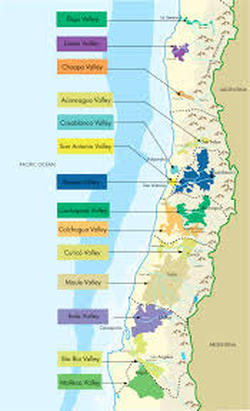 Recently, Wines of Chile sent me nine bottles of wine to taste and review. These wines representing eight regions throughout Chile will be available in Whole Foods Markets nationwide for the “Country of Origin In-Store Program” from August 24th through October 26th, 2016. 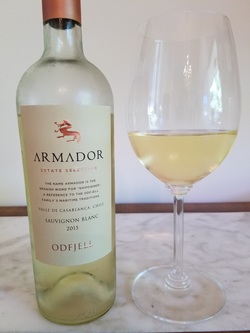 Odfjell 2016 Armador, Sauvignon Blanc, Casablanca Valley Odfjell Winery is located in a small corner of the Maipo Valley. Started 25 years ago by Norwegian born ship owner, Dan Odfjell, it is a family run business carried on today by his sons Laurence and Dan Jr. Odfjell Winery prides itself in producing unique wines with an emphasis on sustainability. Armador, which is the Spanish word for “ship owner”, is 100% Sauvignon Blanc harvested from their vineyard in Casablanca Valley. The color is soft yellow with a green tinge to it. A floral bouquet with citrus and pear continues onto the palate with light fruit and citrus notes. This is a crisp wine that would make a great aperitif or served with light meals. http://odfjellvineyards.cl Alcohol: 14% Price: $12.99 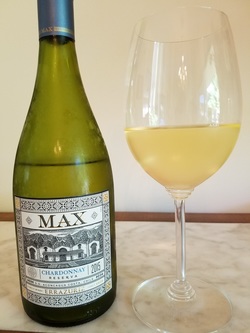 Viña Errazuriz 2015 Max, Chardonnay, Aconcagua Costa Don Maximiano Errázuriz founded Viña Errazuriz in 1870. It is a fifth generation family owned winery. Eduardo Chadwick Claro is president of Viña Errazuriz and a descendent of the winery’s founder. Errazuriz was the first estate to plant vines and cultivate the coastal area of Aconcagua Valley and also one of the first wineries to be granted the Certification of Sustainability. The Viña Errazuriz 2015 Max Chardonnay Reserva is 100% Chardonnay. The color is straw with citrus, tropical fruit and pear on the nose. The palate is layered with citrus, lush fruit and a creamy mouthfeel. Lemon and flowers are persistent on a long crisp finish. This is a refreshing wine that would pair well with most meals. http://www.errazuriz.com Alcohol: 13.28% Price: $17.99 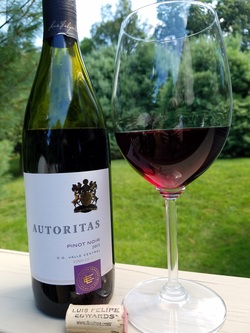 Autoritas 2014 Pinot Noir, Valle Central Autoritas wines are produced by Luis Felipe Edwards in the Valle Central region. The name Autoritas is derived from the Latin word Auctoritas that means respect and prestige. The 2015 Autoritas is 100% Pinot Noir. The color is dark cherry with aromas of berries, spice and pepper. The palate offers cherry, plum and spice with almost no tannins to speak of. This is a very clean and uncomplicated wine. You can’t beat the price! http://www.lfewines.com Alcohol: 13.5% Price $7.99 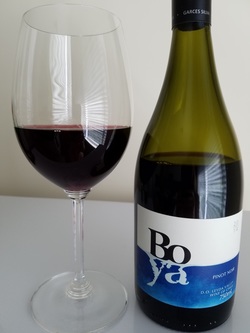 Boya 2014 Pinot Noir, Leyda Valley (San Antonio Valley) Boya Winery is a boutique estate winery located just five miles from the ocean. Matias Garces Silva is founder of Boya Winery and pioneered winemaking in Leyda, a sub-region of the San Antonio Valley in the coastal zone. Fittingly, Boya means, “buoy” in Spanish. Boya 2014 Pinot Noir is 100% Pinot Noir with a dark ruby color. The wine has intense aromas of fresh fruit, strawberry, tea rose and a hint of spice. The palate is nicely balanced with ripe fruit and spice. Soft tannins with a little pepper on a medium finish add to the character of this wine. http://www.boyawines.cl Alcohol 13% Price: $14.99 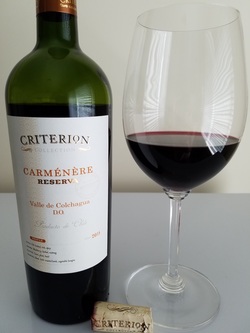 Criterion 2014 Carménère, Colchagua Valley Criterion Cellars is located in the southernmost region of Chile. Colchagua is the southernmost portion of the Rapel Valley and one of Chile’s best-known wine regions. It is noted for the Carménère grape. This is a dark skinned grape that was originally planted in the vineyards of Bordeaux and has found its home in Chile. The 2014 Criterion Carménère is 100% Carménère. The color is deep crimson, bordering on purple. The nose offers black fruits, spice and a hint of earth. The palate is layered with dark cherries, blackberries, pepper, cocoa, coffee and soft tannins. The finish is medium to short, but has all the elements for an enjoyable wine. http://www.criterioncellars.com Alcohol 13% Price: $13.99 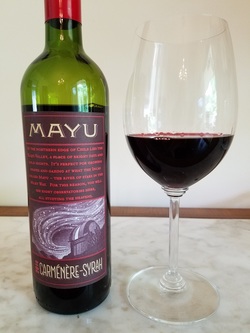 Mayu 2014 Carménère-Syrah, Elqui Valley Mayu Winery located in the Elqui Valley at the northern edge of Chile, was founded in 2005 by Mauro Olivier. The focus of Mayu winery is “only the production of Premium wines originated in the Elqui Valley with unique style and personality.” The arid desert climate and cold nights are ideal for growing grapes, leading to more concentrated aromas, deep color and developed tannins. Mayu is the Incas word for “river of stars in the Milky Way”. The 2014 MAYU Carménère-Syrah Reserva is a blend of 55% Carménère and 44% Syrah. The color is deep ruby with purple hues. It is an interesting combination of aromas, from ripe fruit to earth and spice. The palate offers dark cherry, plum, spice and hints of vanilla lingering on a medium finish. It has depth, but yet light enough to serve in the warm days still ahead. http://mayu.cl Alcohol: 14.5% Price: $12.99 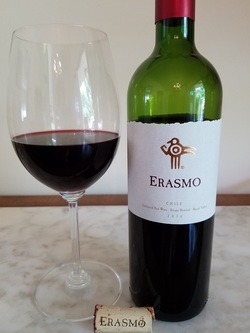 Erasmo 2010 Reserva de Caliboro, Maule Valley In 1995 Count Francesco Marone Cinzano, owner of the Col d'Orcia estate in Montalcino, Tuscany, brought his expertise and knowledge to "Riserva di Caliboro" in the Maule Valle of Chile to produce high quality wines from grape clones imported from France. The 2010 Erasmo Reserva de Caliboro is a single vineyard handcrafted wine. The blend is 60% Cabernet Sauvignon, 30% Merlot and 10% Cabernet Franc. The color is deep ruby with aromas of dark berries, earth and a hint of floral. This is a full-bodied wine with a beautiful richness to it. Layers of blackberry, cherry, candy apple, licorice and pine give way to soft tannins and a long velvety finish. This is a wine to drink now and right through winter. Alcohol: 14.5% Price: $19.99 http://www.erasmo.bio 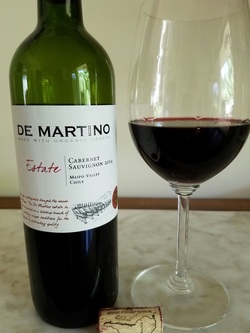 De Martino 2014 Estate Organic Cabernet Sauvignon, Maipo Valley De Martino winery was established in 1934 when the De Martino family moved to Maipo from Italy. The winery is now run by the family’s third and fourth generation and is one of the leading organic producers in Chile. They have vineyards in seven regions throughout Chile. The 2014 Estate Organic Cabernet Sauvignon is 100% Cabernet Sauvignon. The color of the wine is ruby with subtle aromas of cherry, red and black fruit with a hint of mushrooms. The palate offers lush fruit with traces of tobacco, earth and lingering spice on the finish. Medium-bodied with mild tannins. Very nice! http://www.demartino.cl Alcohol: 13.5% Price: $12.99 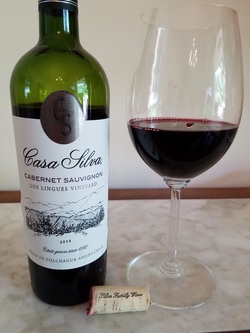 Casa Silva 2014 Los Lingues Vineyard, Cabernet Sauvignon, Colchagua Valley Viña Casa Silva is a family owned winery that was established in 1997 and is located in Colchagua Valley. Although recently under a new name, the family’s passion for winemaking began in 1892, when Emilio Bouchon arrived from France. The fourth and fifth generation decided to make wines under their own label, creating a new family winery, Viña Casa Silva. The 2014 Los Lingues Vineyard Cabernet Sauvignon is 100% Cabernet Sauvignon. The color is deep garnet with lovely aromas of dark fruit, strawberries, anise and pepper. The palate is lush with juicy red fruit, hints of tobacco, and soft tannins. The finish is medium with a touch of pepper lingering. This wine would pair well with a hearty meal! http://www.casasilva.cl/home Alcohol: 14% Price: $17.99 With all the above wines costing below $20.00, this is a great opportunity to “visit” Chile at Whole Foods Market and experience some wonderful wines. There is a wine for everyone and every occasion!
Salud! Penina |
Categories
All
|

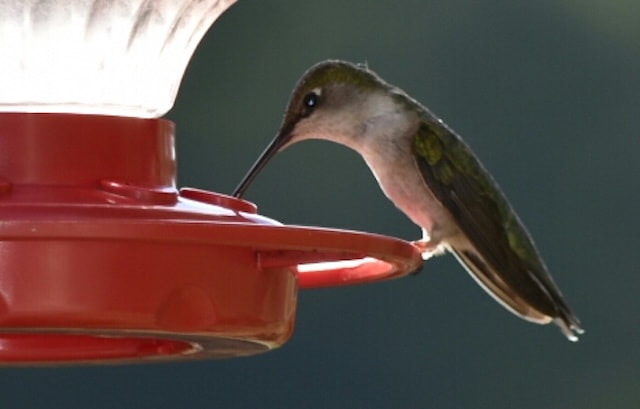
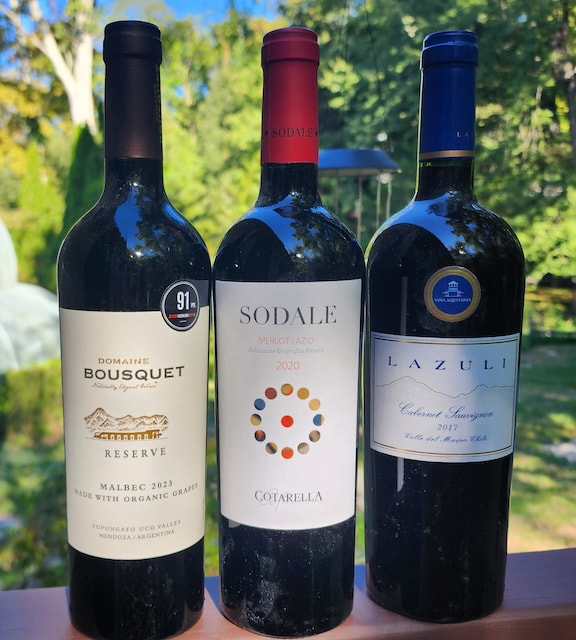
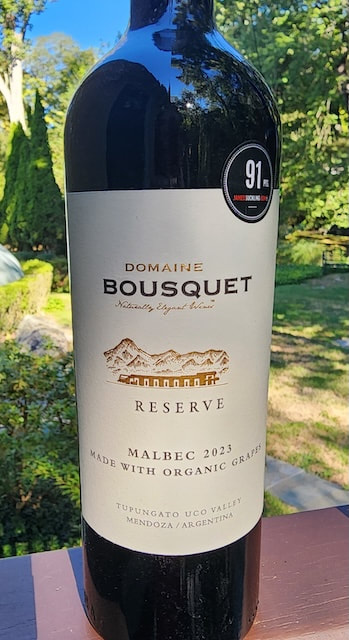
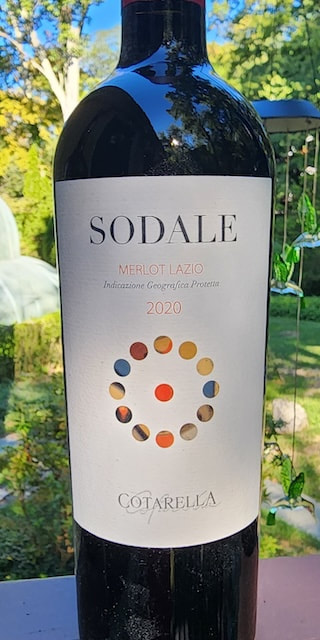
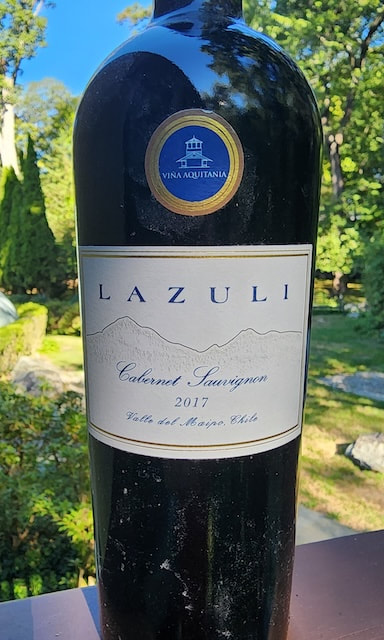
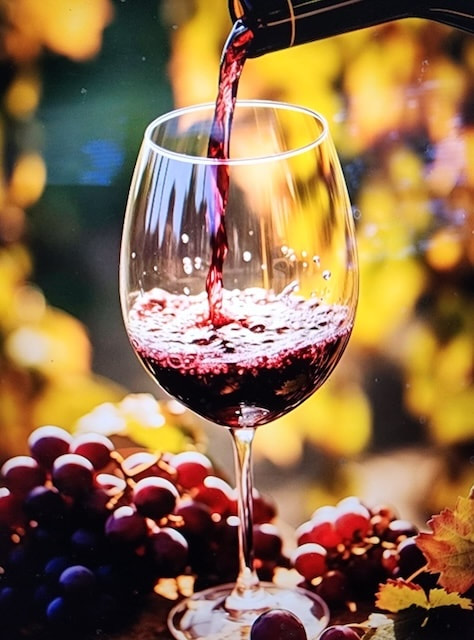
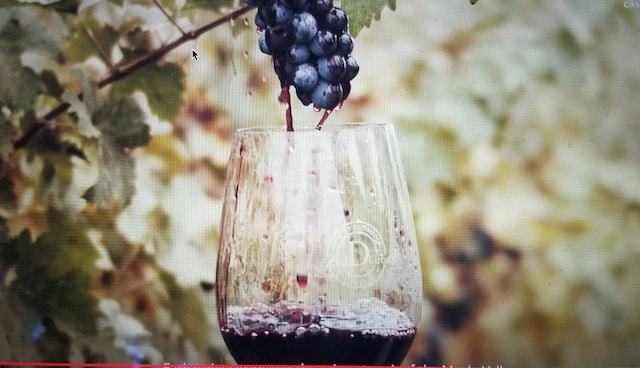
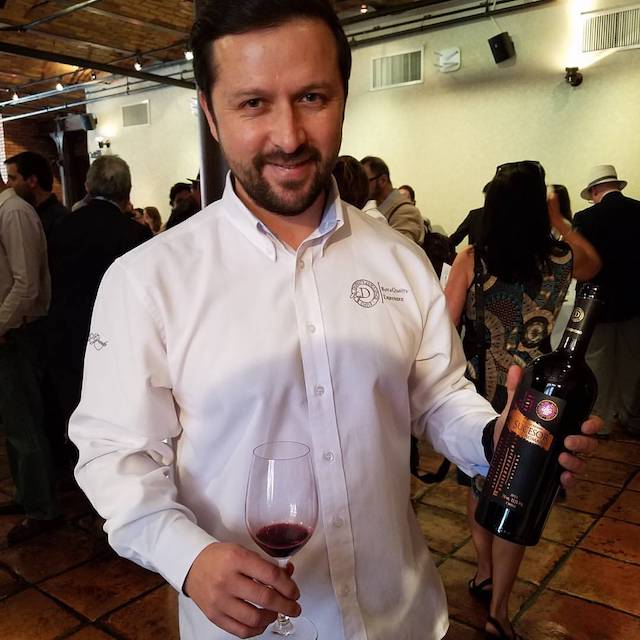
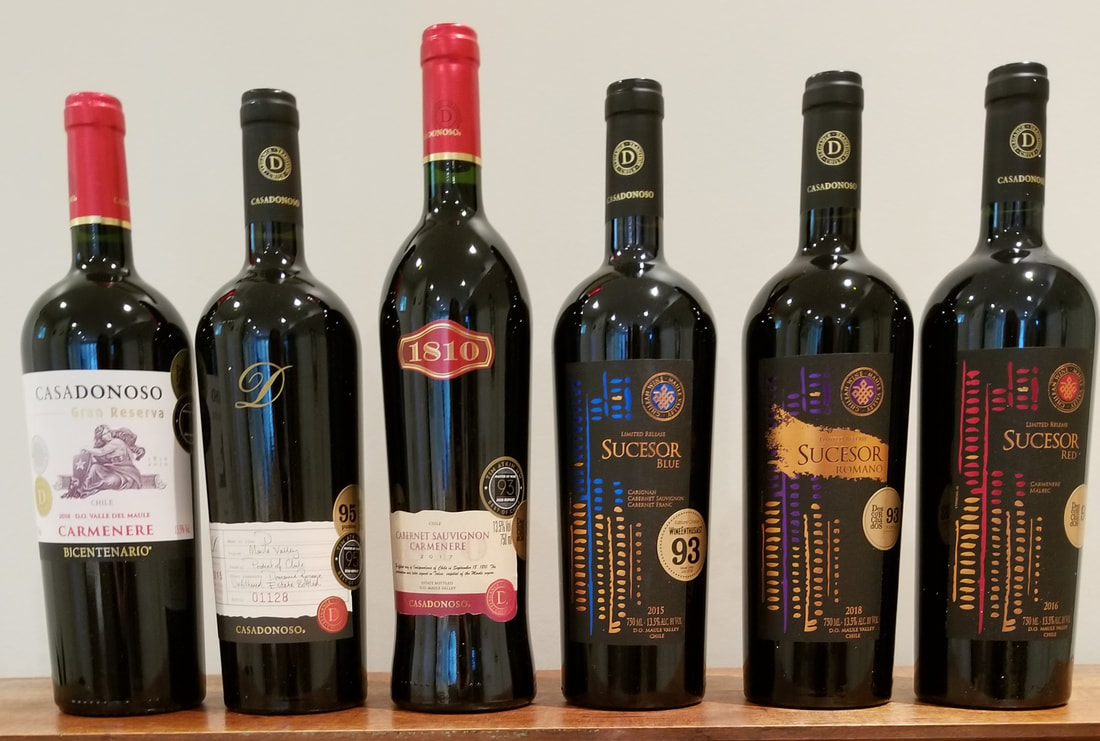
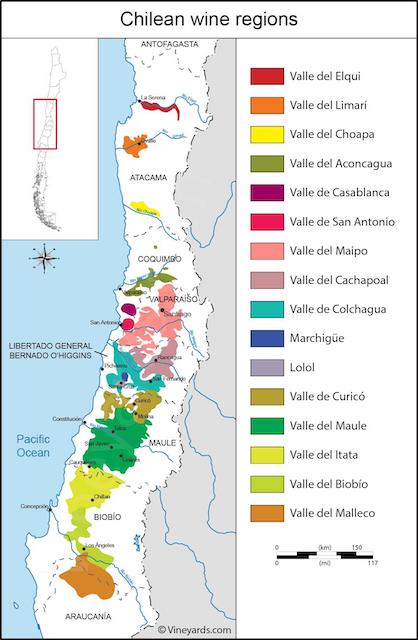
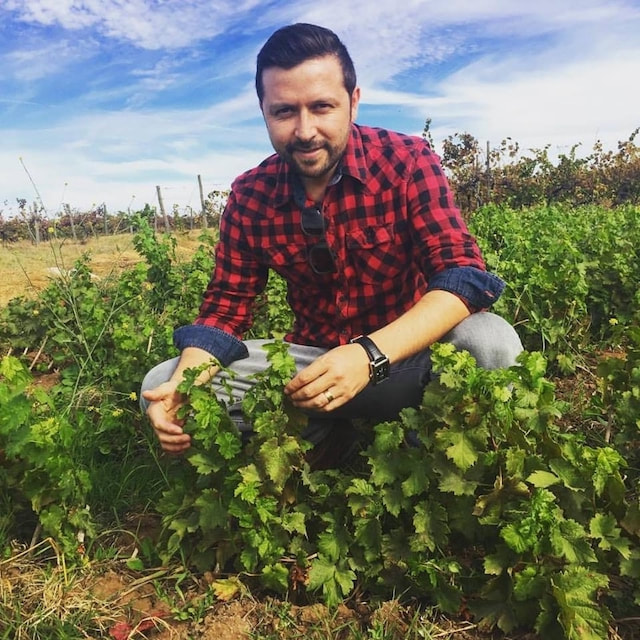
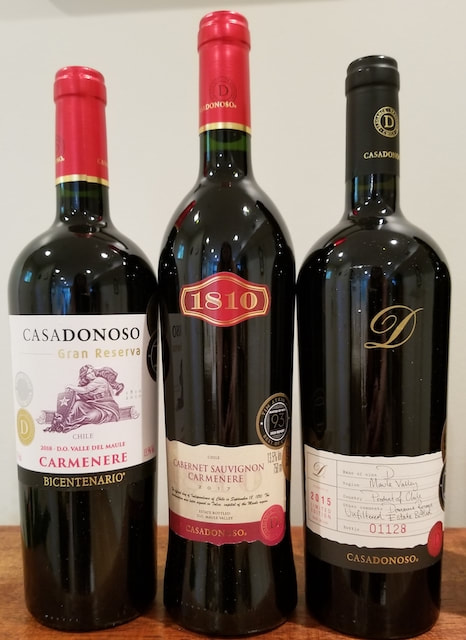
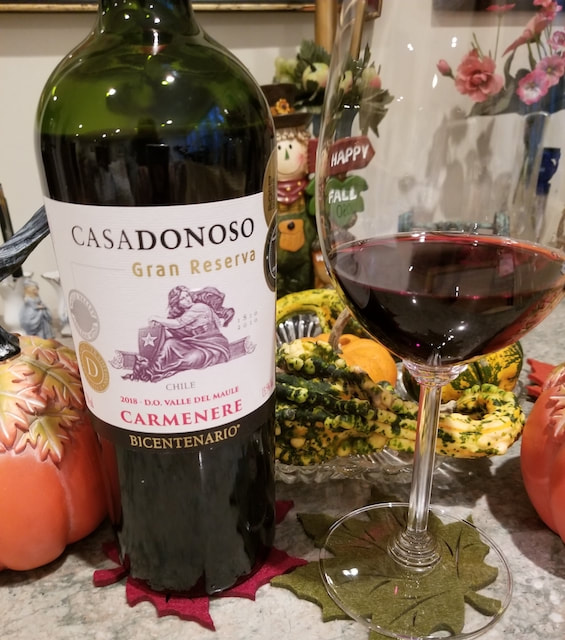
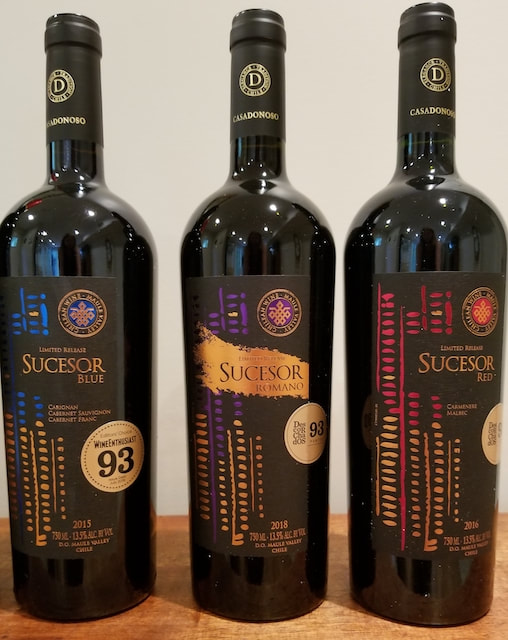
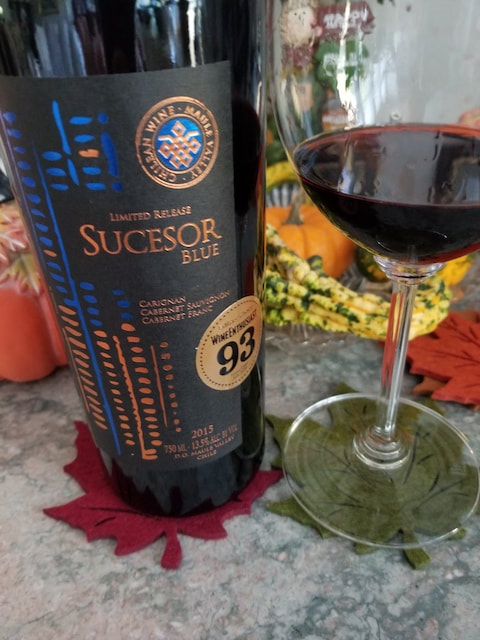
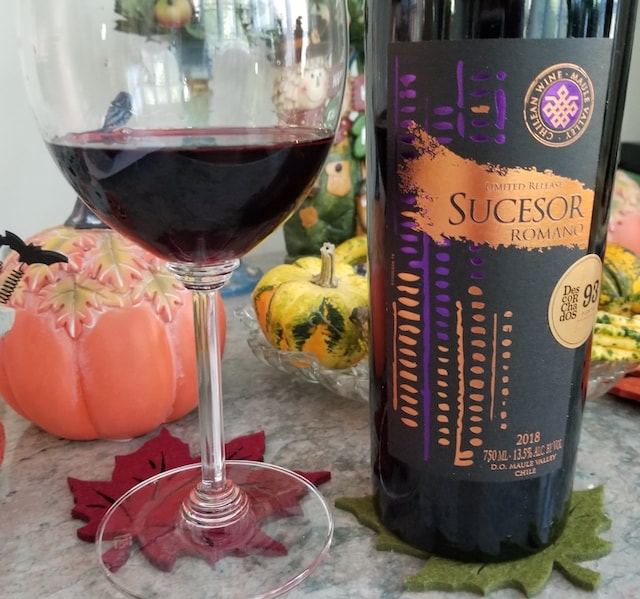
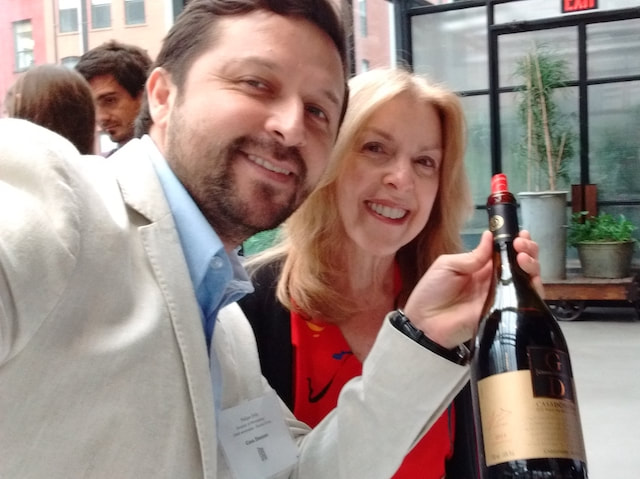
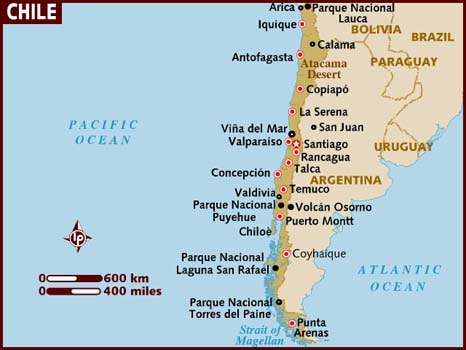
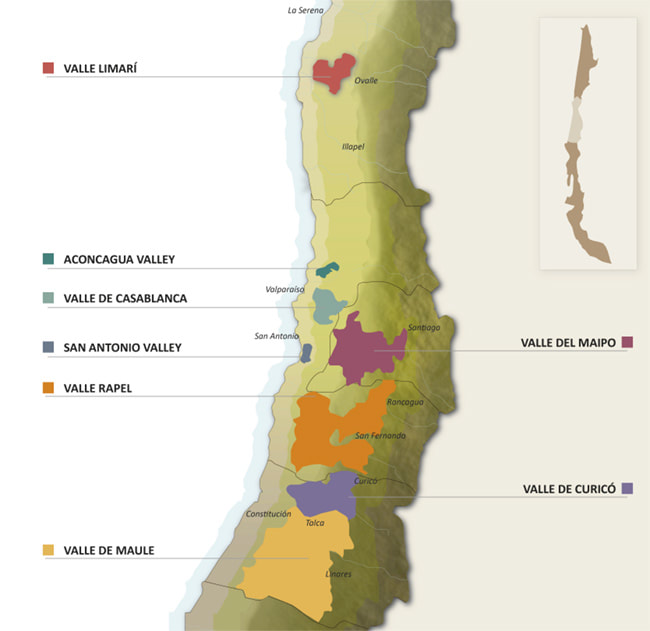
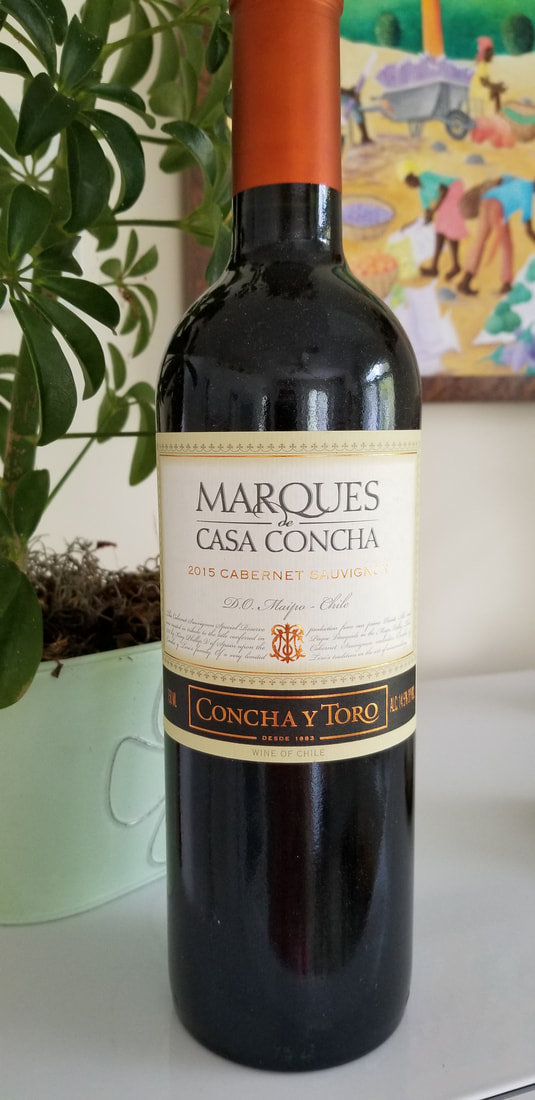
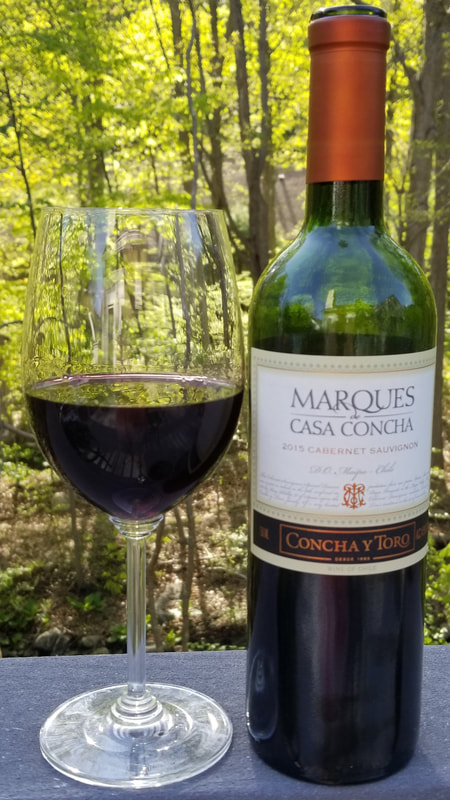
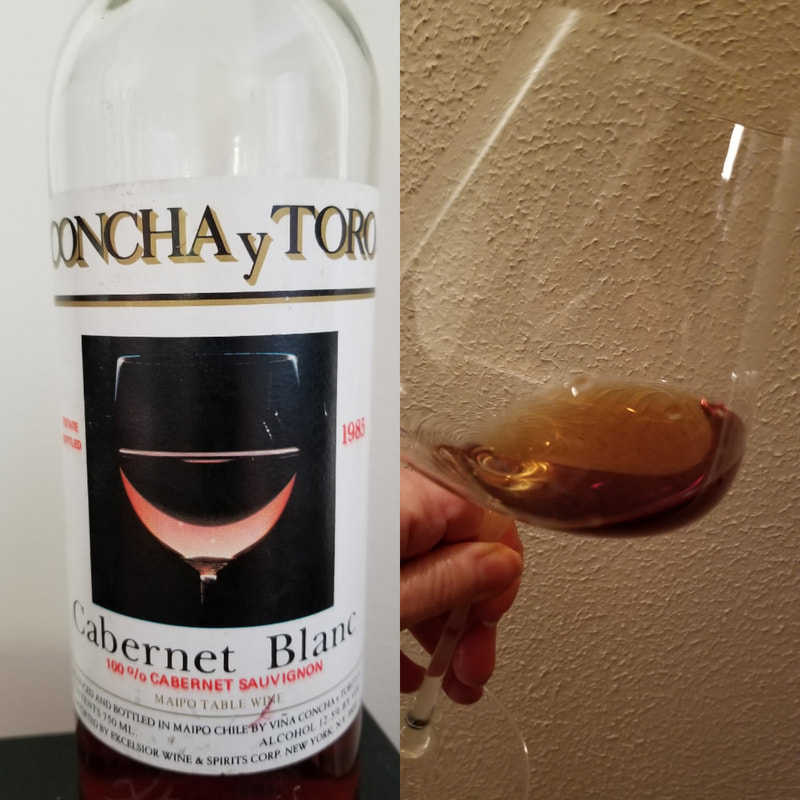
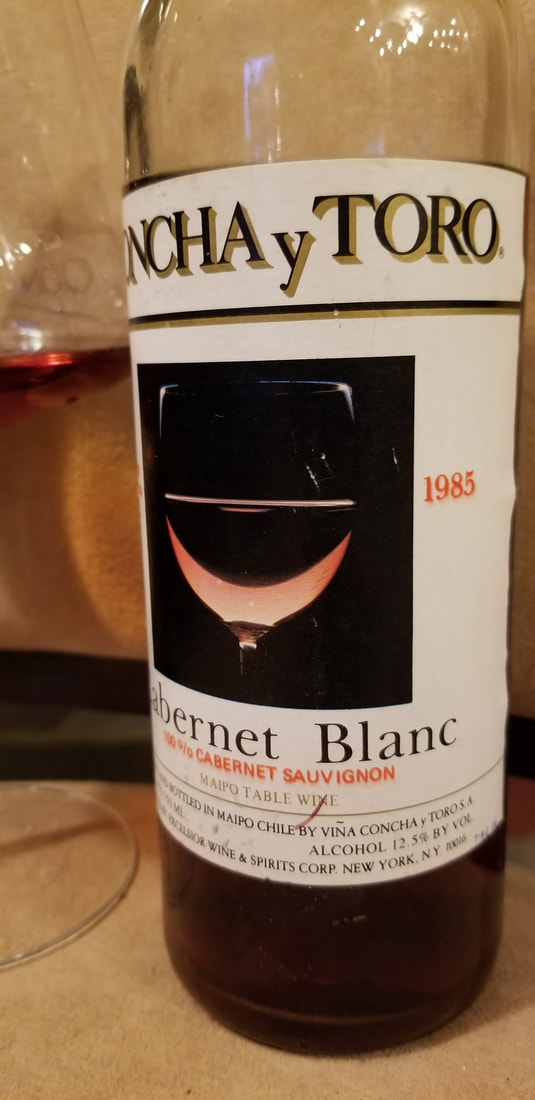
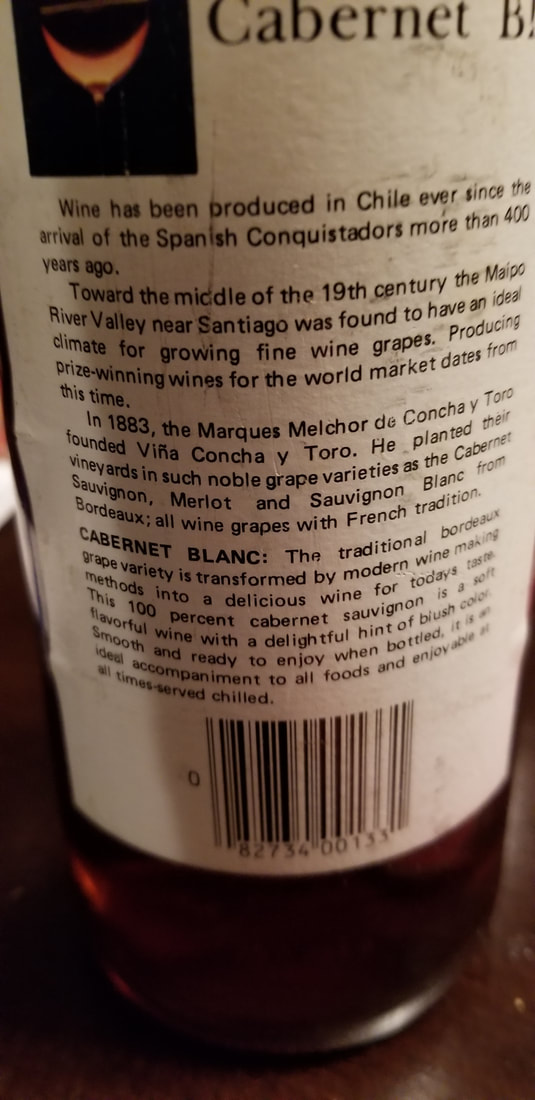
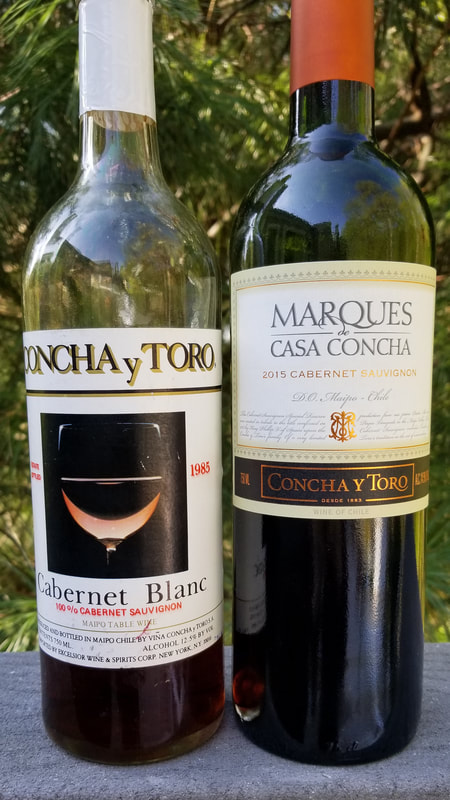
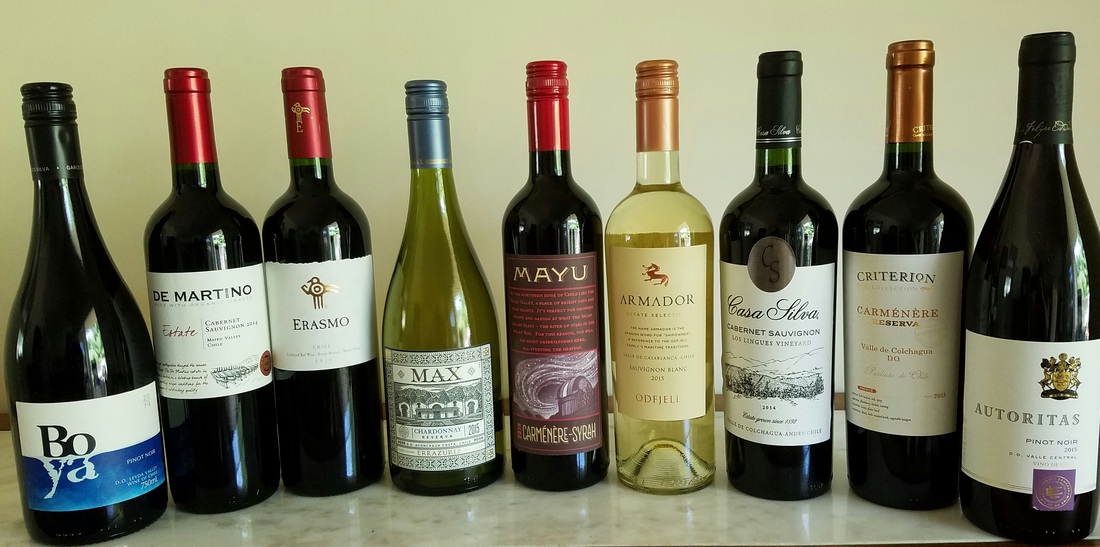
 RSS Feed
RSS Feed